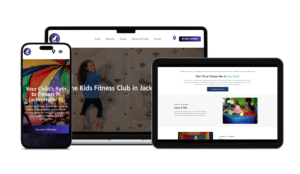Hey there, online store owners and e-commerce enthusiasts! If you’re scratching your head, wondering why your sales aren’t soaring, you’ve landed on the right page. We’ve got a fresh set of unique, proven strategies to elevate your e-commerce game. And don’t worry, this isn’t recycled advice; these tips are based on cutting-edge SEO and digital marketing research.
1. Unearth Hidden Keyword Gems
In the crowded online marketplace, using the same keywords as everyone else won’t get you far. You need to dig deeper to find those hidden keyword gems that your competitors are missing.
Consider using lesser-known keyword research tools like AnswerThePublic. These platforms can offer unique insights into what your specific audience is searching for. Once you’ve identified these unique keywords, integrate them naturally into your product listings, blog posts, and even your meta descriptions.
2. Craft Story-Driven Product Descriptions
Your product descriptions shouldn’t just be a list of features; they should tell a story. A compelling narrative can captivate your audience and make your product memorable.
Instead of just listing features, talk about the journey of how your product comes to life. Describe a day in the life of someone using your product. Make it relatable and engaging, and don’t forget to naturally incorporate your unique keywords.
3. Feature Real Customer Reviews
Customer reviews are more than just star ratings; they’re stories from real people who have interacted with your product. These stories can be incredibly persuasive to potential buyers.
Encourage your customers to share their experiences in video testimonials or user-generated content. Feature these authentic voices prominently on your product pages and share them on your social media channels to build trust and encourage sales.
4. Take advantage of Website Analytics
Data analytics offer a treasure trove of insights, but only if you know how to interpret them. Understanding your website’s data can help you make informed decisions that boost sales and improve customer experience.
Don’t just rely on surface-level metrics. Use advanced tools like heatmaps and session replays to understand how users interact with your website. Analyze this data to identify bottlenecks in the user journey and make necessary adjustments.
Certainly, let’s revise point 5 to provide more depth and detail, while also giving it a new title for better clarity.
5. Make Sure Your Website Is Lighting Fast
Website speed is more than just a technical metric; it’s a crucial part of the user experience. A slow website can lead to cart abandonment, lower search rankings, and a poor first impression. In a world where every second counts, speed can be your competitive edge.
Begin by running your website through performance testing tools like Chrome Lighthouse or GTmetrix. These tools will provide actionable recommendations such as image optimization, browser caching, and script minification. Implement these changes and monitor their impact on load times. For an even faster experience, consider implementing Accelerated Mobile Pages (AMP) and using a Content Delivery Network (CDN) to distribute the load, reducing server lag.
6. Create a Personalized Content Experience
In today’s digital age, content is more than just information; it’s an experience. Just like how Netflix keeps you hooked with personalized recommendations, your e-commerce site should aim to provide a tailored content experience for your visitors.
Start by creating content clusters or “playlists” around specific themes or topics that resonate with your target audience. Use analytics to track which types of content are most engaging for your audience and double down on those. This approach not only improves user engagement but also enhances your website’s SEO by creating a well-organized content structure.
7. Optimize for the Mobile Experience
Mobile shopping isn’t the future; it’s the present. With a significant portion of consumers making purchases through their smartphones, optimizing for mobile is non-negotiable.
Make sure your website design is responsive, adjusting seamlessly to different screen sizes. Use Google’s Mobile-Friendly Test tool to identify areas that need improvement. Also, consider implementing accelerated mobile pages (AMP) to make your site lightning-fast on mobile devices.
8. Leverage the Power of Email Marketing
Generic email blasts are a thing of the past. In today’s world, personalized communication is key, and that’s where email segmentation comes into play.
Divide your email list into smaller segments based on criteria like past purchase behavior, geographic location, or engagement level. Craft personalized messages for each segment to increase the relevance of your emails. Use A/B testing to continually refine your approach and improve open and click-through rates.
9. Keep Track of Your Metrics
Running an e-commerce business without tracking key performance indicators (KPIs) is like sailing a ship without a compass. You need to know where you’re going to make informed decisions.
Regularly monitor metrics like website traffic, conversion rates, average order value, and customer lifetime value. Use advanced analytics tools that offer deeper insights, like customer segmentation and cohort analysis, to understand your audience better and tailor your strategies accordingly.
10. Stay On Top of Industry Trends
The e-commerce landscape is ever-changing. New technologies, consumer behaviors, and industry trends can either be an opportunity or a threat, depending on how prepared you are.
Stay updated by subscribing to industry newsletters, following thought leaders on social media, and attending relevant webinars and conferences. Make it a habit to regularly review and update your business strategies based on the latest trends and insights.
Conclusion
So there you have it—10 proven strategies to give your e-commerce business the boost it needs. But why go it alone when you could have a team of experts by your side? If you’re ready to take your e-commerce business to the next level, we’re here to help. From SEO to content marketing, we’ve got the skills and experience to make it happen. Contact us today to get started on your journey to e-commerce success!




One Response